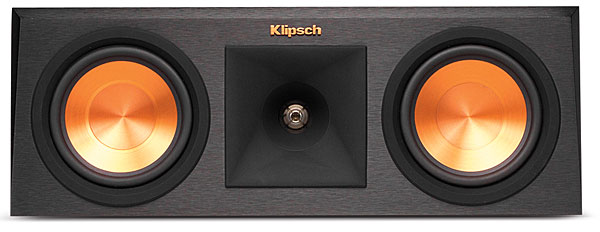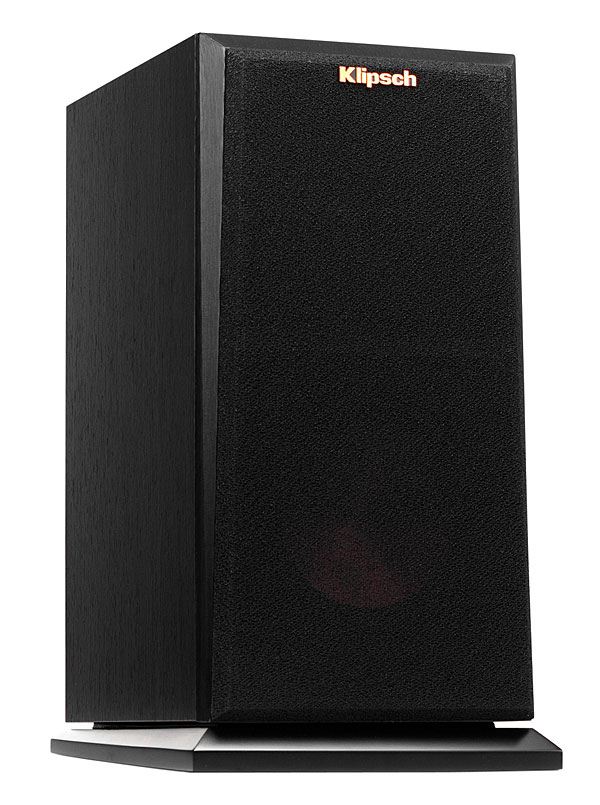Klipsch Reference Premiere RP-150M Speaker System Review

AT A GLANCE
Plus
Titanium-dome tweeters in 90x90 Tractrix horns
Tractrix-shaped rear ports
Wireless sub option
Minus
Sacrifices some warmth for analytic detail
Sub subdued
THE VERDICT
Klipsch’s Reference Premiere achieves high resolution at a low price, though it can be too revealing for some content.
Klipsch is built on concepts so fundamental that they have transcended changes in audio fashion and even ownership. Chief among them is the concept of horn-loading, promulgated by the legendary Paul W. Klipsch (1904–2002) and marketed by him, his family, and their successors. It enables reasonably priced speakers to play louder, and to many listeners sound clearer, with less power. Klipsch speakers also look like no one else’s, thanks to the tangerine/copper color of the woofers, another of the brand’s 20th-century traditions.
Reelin’ in the Years
Klipsch’s new Reference Premiere series is the latest version of the long-standing Reference series, which has been through many iterations since 1999. One thing that sets Premiere apart is that models will come in both traditional passive and powered versions that will require only a source and no external amplification. The passive versions have arrived first and are reviewed here.
The passive Premiere models include three towers: the RP-280F ($1,350/pair), RP-260F ($1,050/pair), and RP-250F ($800/pair). The two monitors are the RP-160M ($600/pair) and RP-150M ($500/pair). There are also three centers (RP-450C, $650; RP-440C, $550; and RP-250C, $450) as well as two surrounds (RP-250S, $450/each; RP-240S, $325/each). Our system uses a pair of RP-150M monitors, the RP-250C center, and a pair of RP-250S surrounds, along with the R-110SW subwoofer ($549) from Klipsch’s current Reference line. The center, surround, and sub are also available in various home theater system packages.
The models under review all use the same horn-loaded 1-inch titanium-dome tweeter and 5.25inch Cerametallic cone woofer in fiberboard enclosures with magnetically attached grilles. The monitor has one of each driver, the center has two of the woofers flanking the tweeter, and the surround has two of each.

Klipsch refers to its tweeters as being mounted in a Hybrid Tractrix Horn. What makes it a hybrid? It’s the combination of a round throat and square mouth. The 90 x 90-degree horn, though not entirely unprecedented, is wider than the 60 x 90-degree horn in some older Reference lines, and it uses a newly designed horn geometry. Widening the horn’s horizontal dispersion angle is said to broaden the soundstage, improving imaging while maintaining the traditional strengths of a hornloaded loudspeaker: greater power handling, dynamics, and efficiency. And make no mistake, these speakers are very efficient. The monitor’s rated sensitivity of 93 decibels is decidedly on the high side of average; the center’s 96 dB and surround’s 95 dB are extremely high. Compare these numbers to our Test Bench measurements.
The tweeter dome lurking behind the horn has nearly its entire surface covered by a transparent phase plug. Klipsch says the plug has been “painstakingly redesigned, as it plays an important role in the performance and voicing of the tweeter.”
The tangerine-hued Cerametallic woofer cones are made of anodized aluminum, both sides of which are covered with a thin ceramic layer. Claimed benefits include higher sensitivity, better power handling, and less mechanical breakup at high levels.
On the back of the monitor and center speakers, surprisingly enough, is what appears to be a second horn, though it functions as a port. It “follows the Tractrix curvature equation” developed for Premiere’s horns, in an attempt to produce less port noise than a conventional port. Klipsch says this improves bass response.

The monitor and center have a few unusual design flourishes. One is the beveling that surrounds three sides of their baffles. The monitor also sits on a beveled plinth. Klipsch says this “offers some low-frequency decoupling from the resting surface of the speaker,” though its main purpose is cosmetic. Plastic-nut binding posts are diagonally staggered—an arrangement I haven’t seen before—to make them easier to see and manipulate when you’re crouched behind a speaker in a dim room. [Ed. Note: Well, there’s a good idea, particularly as it relates to threading bare wire ends through the post holes. Kudos to Klispch; wonder why no one thought of this before.]
The surround is a bipole design using what Klipsch calls “WDST,” or Wide Dispersion Surround Technology. The idea is to combine image localization with flexibility in placement. Unlike the other speakers, this one has a sealed enclosure.
The R-110SW subwoofer continues the evocation of Led Zeppelin’s “Tangerine” (“Tangerine, tangerine / Living reflection from a dream”) with a 10-inch front-firing Cerametallic-coned woofer in another elegantly bevel-based enclosure. Pins, not magnets, attach the grille. The slot-shaped port is located at front-bottom to allow for in-cabinet or in-wall installation. The back panel includes a jack that accepts the optional Klipsch WA-2 wireless adapter ($129), which functions with subs from Klipsch and stablemates Energy, Jamo, and Mirage. Other features, connectivity options, and the 200-watt RMS amp are minimal but adequate for the price.
- Log in or register to post comments































































